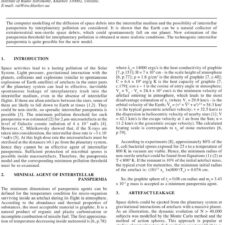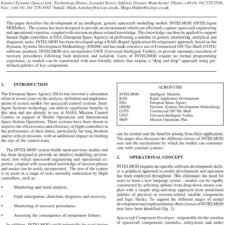Uranus Mission Concept Options
£5.00
R. E. Gold et al. (2010), JBIS, 63, pp.357-362
Refcode: 2010.63.357
Keywords: ASRG, radioisotope power
Abstract:
As one of several studies commissioned by the National Research Council’s Planetary Decadal Survey to explore the technical readiness, feasibility and affordability of scientifically promising mission scenarios, JHU/APL helped to develop several Uranus Mission concepts. This study defined a preferred approach within the risk/cost trade space for a Uranus Mission to be launched in 2020-2023 within a cost range of $1.5B-$1.9B in FY15$. Initial energy trades identified Uranus as a more accessible target and a lower risk ice giant mission option than Neptune within the specified launch time frame. A low-thrust solar electric propulsion trajectory option was developed to Uranus based on a single Earth gravity assist that could be repeated every year with a 21 day launch window. Launching on an Atlas V 531 and allowing a 13 year cruise time, a mission concept was developed that could accommodate both the floor and enhanced orbiter payload, perform atmospheric science with a fully equipped shallow entry probe, and perform multiple targeted flybys of each of the five Uranian satellites. No new technology is required with the exception of continued development of large parasol solar arrays (similar to those being developed for Orion) to power the solar electric propulsion stage, and the completion of the development of the Advanced Stirling Radioisotope Generator. Overall, the study has developed a concept that can achieve very robust science at Uranus at a cost below flagship mission levels and with minimal required technology development. Significant descope options are available to ensure that the mission is affordable. The study was conducted by a team directed by Dr. William Hubbard with members of both the Giant Planets and Satellites Panels working with the JHU/APL Space Department as the design center. Other team members included NASA Glenn Research Center’s COMPASS team for the cruise portion of mission design and the solar electric propulsion stage concept; NASA Langley Research Center for entry probe descent trajectory analysis; and Georgia Institute of Technology for Uranus satellite tour trajectory development.





